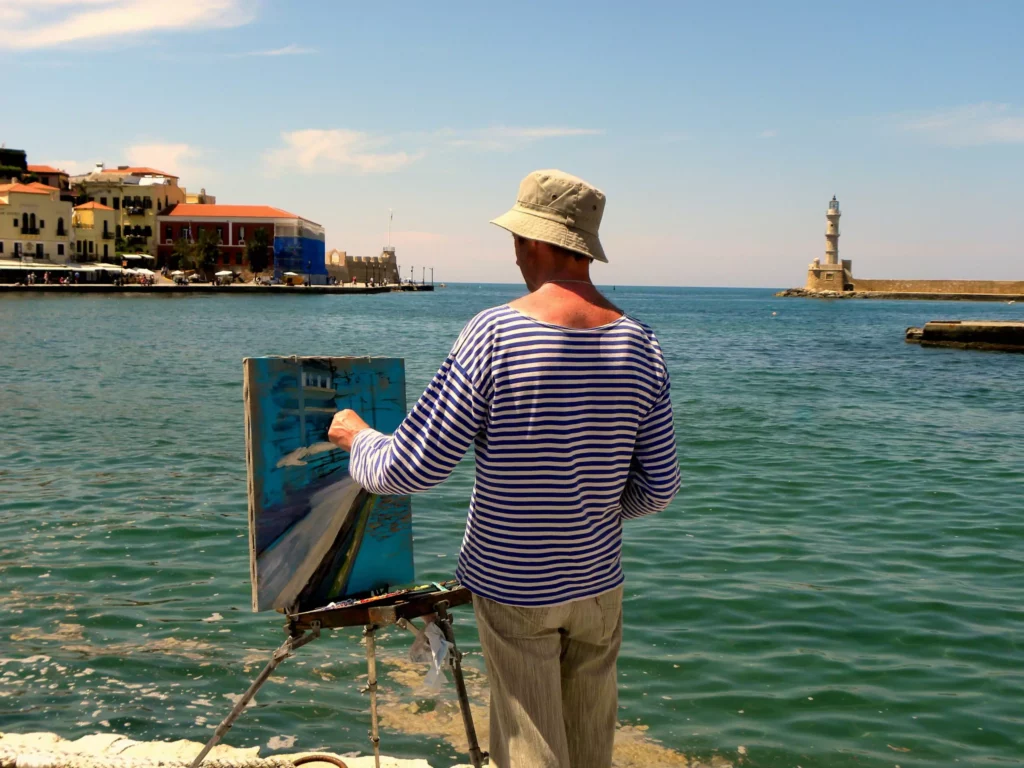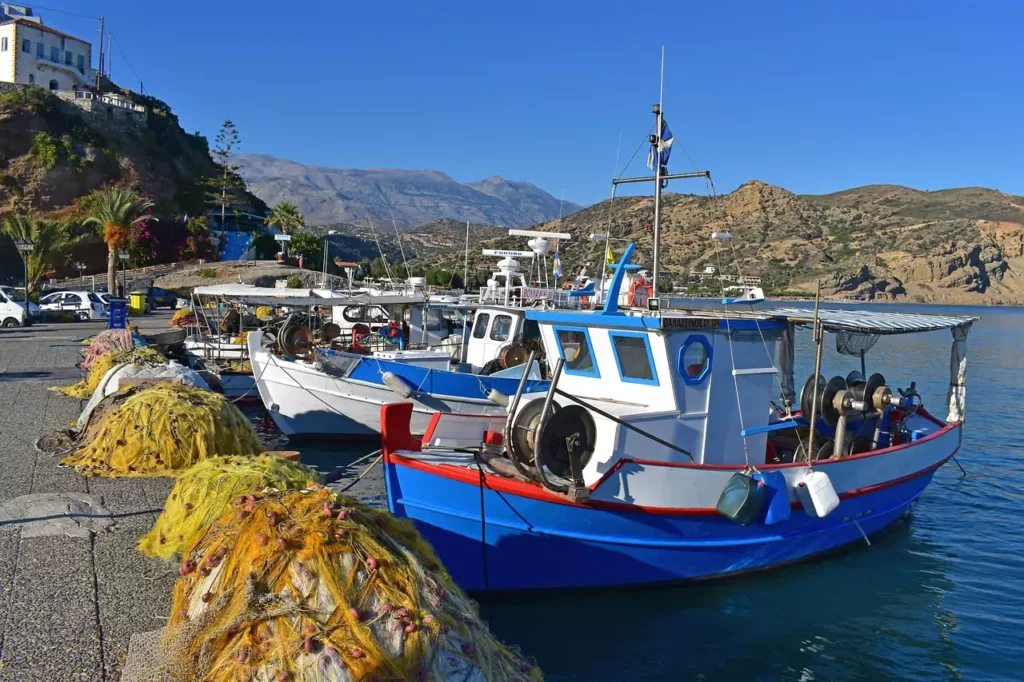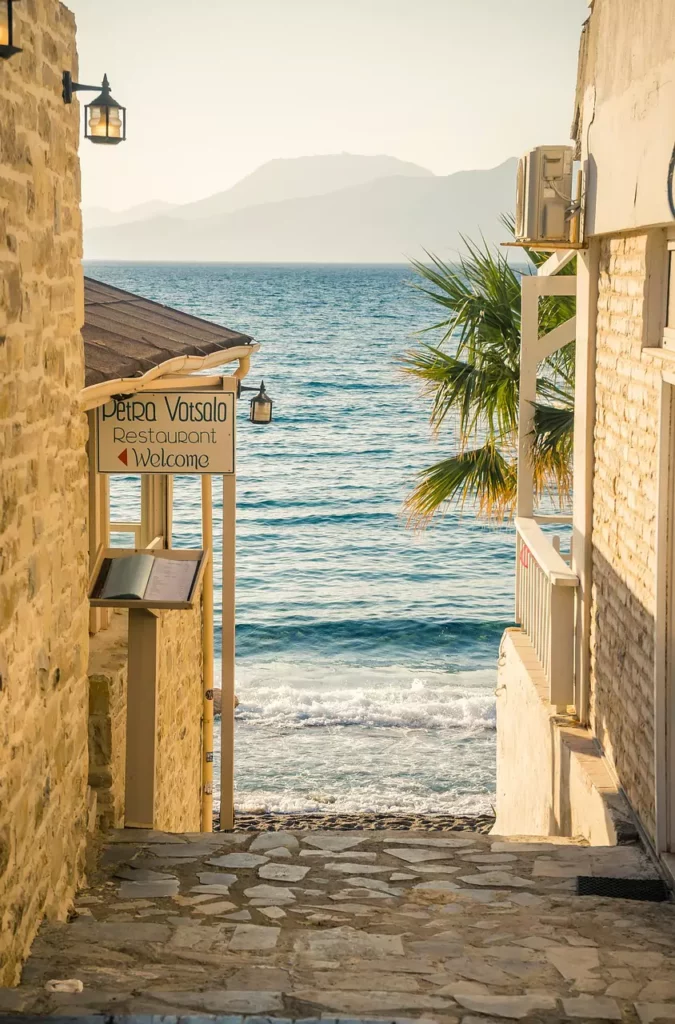Crete in Winter – A Different Kind of Greece
Crete in winter doesn’t make sense until you go. The beaches are too cold for swims, the tavernas close earlier, and the streets feel like a film set after the crowds pack up and leave. But that’s the beauty: the island finally exhales.
I walked through Knossos almost alone, no queues, no buses unloading day-trippers. Just me, the stones, and the sound of crows circling above. Later that night in Chania, a café owner slid a glass of raki across the table “to keep warm.” It was 16°C. Not freezing, but the warmth in that glass said everything about Crete in winter: quieter, cheaper, more real.
Crete in Winter: Things to Do, Weather & Why It’s Worth Visiting
First, the weather is kind. It hovers around 15°C, which means you can wander for hours without melting into the pavement like in August.
Second, prices. That boutique hotel with the view of Chania’s Venetian harbor? Half the price. Rental car? Practically begging you to take it.
And most importantly: the absence of everyone else. You get ruins, harbors, and hikes that would normally be jammed in summer will be all to yourself.

You don’t come to Crete in winter to sunbathe. You come for this:
Knossos & Heraklion Museum: usually shoulder-to-shoulder in summer. In January, you can actually hear your own thoughts.
Chania & Rethymno Old Towns: cobbled streets, Venetian architecture, tavernas that feel like living rooms.
Winter hikes: the big Samaria Gorge is closed for safety, but smaller gorges (Imbros, Aradena) are perfect in cool weather.
Snow in the White Mountains: yes, Crete gets snow. Standing on the coast while staring at snowy peaks is surreal. Locals even ski when conditions are right.
Food & wine: winter menus lean hearty: lamb stews, snails, wild greens. And locals actually have time to talk instead of rushing plates out to tourists.
A Few Things I Learned
Bring layers. The coast can be 18°C, but head inland and you’ll wish you packed a fleece.
Rent a car. The buses run less often in winter, and Crete is about discovering villages you can’t pronounce.
Forget nightlife. Winter is for slow dinners, raki shots, and maybe one late taverna that doesn’t care what season it is.

Visiting Crete in winter feels like you’ve been let into a secret. It’s not for beaches or parties. It’s for ruins without the rush, mountains with snow, and conversations with people who actually live here.
If you think Greek islands only exist between June and August, Crete will prove you wrong.
Absolutely. It’s not about beaches and bikinis, it’s about ruins without queues, old towns without cruise ships, and cozy tavernas that feel like someone’s living room. If you want quiet + authentic, winter is the season.
Not very. On the coast, it’s usually 12–17°C (55–63°F). In the mountains, though, you’ll see snow and it can drop close to freezing. Pack a jacket and you’ll be fine.
If you’re brave, yes. Locals stick to coffee, not the sea, but you’ll always spot a few Northern Europeans swimming no matter the month.
Most touristy beach resorts close, but the main cities, Heraklion, Chania, Rethymno, stay alive. Shops, museums, and plenty of tavernas are open year-round.
Yes, often half the summer price (sometimes even less). Crete in January can feel like a bargain if you’re used to July rates.
Yes, but don’t expect the Alps. The White Mountains get snow in winter and there are small ski spots, but the real magic is standing on a beach while staring at snowy peaks.


